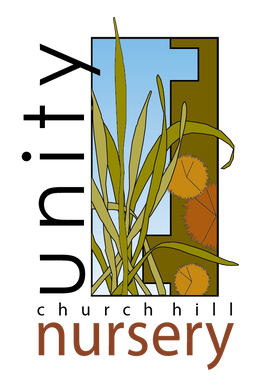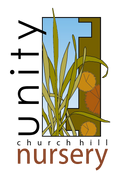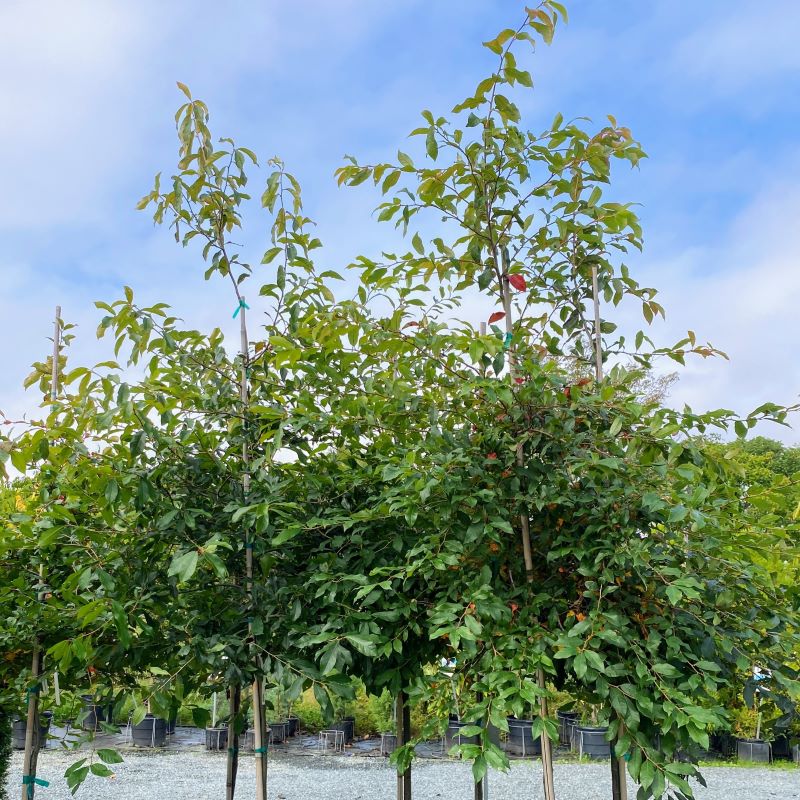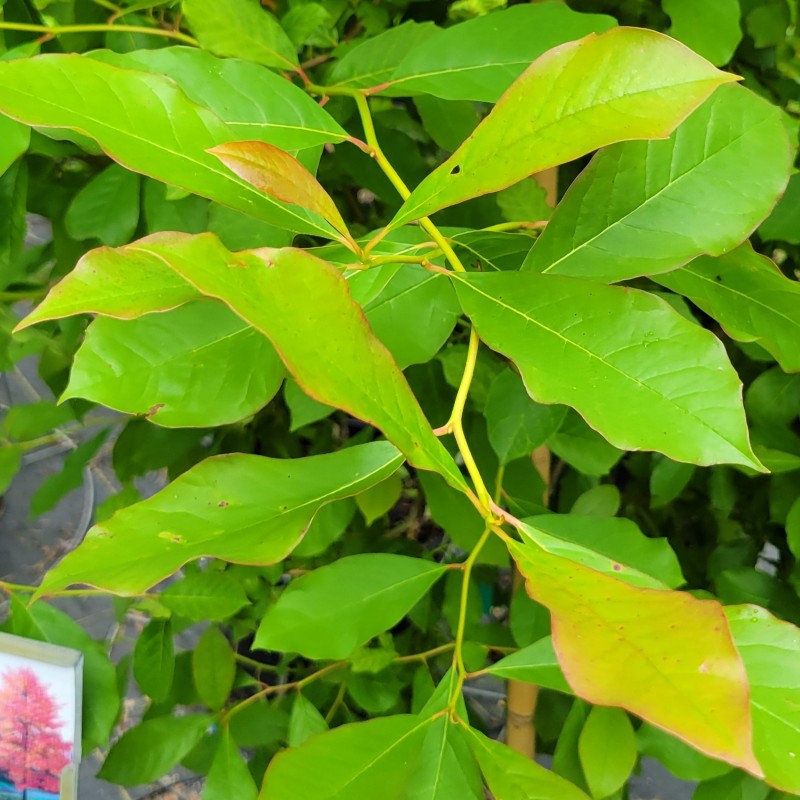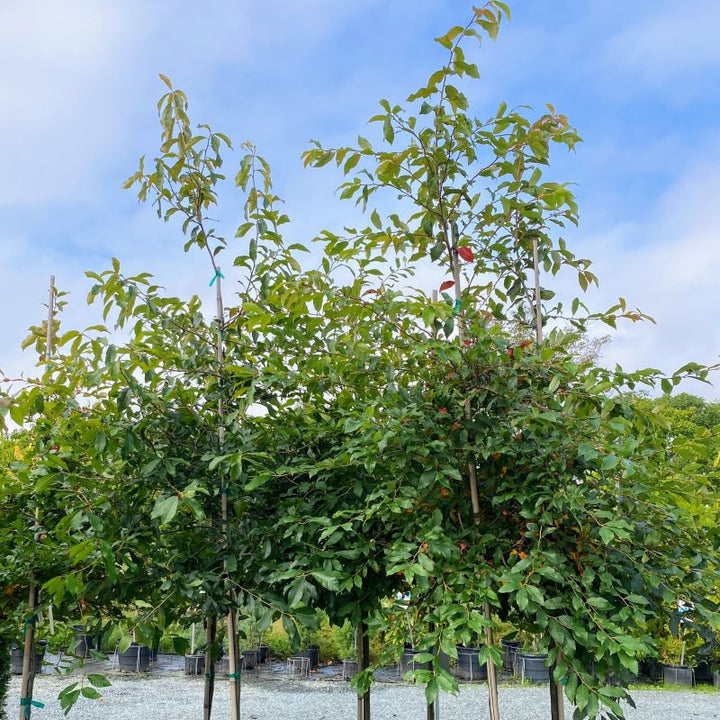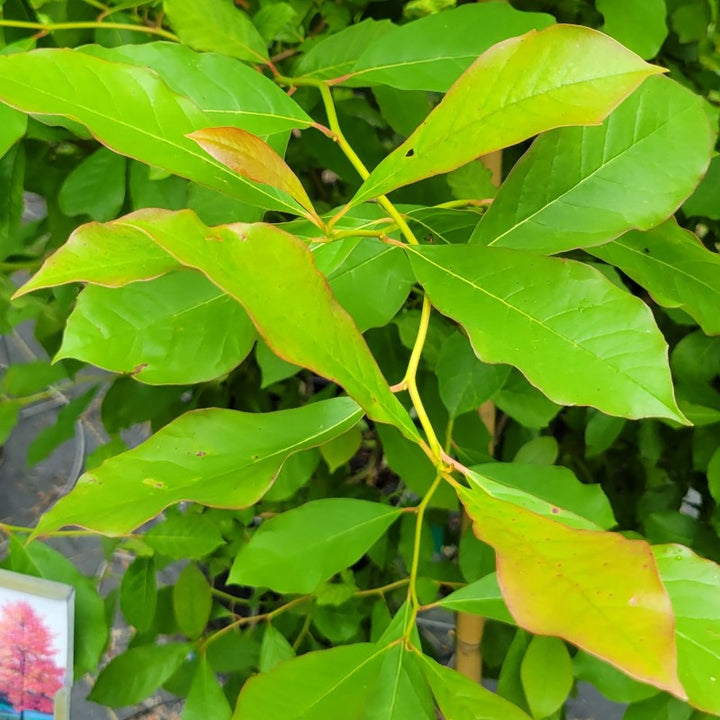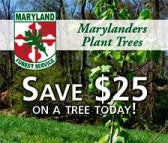Nyssa sylvatica (Black Gum)
- Low stock - 3 items left
- Inventory on the way
Nyssa sylvatica, commonly known as blackgum or black tupelo, is a medium-sized tree native to wet lowland areas across much of the eastern half of the United States. Growing to 40-70' tall in the wild, most cultivated blackgum grow to only 20-50' tall and 20-30' wide, making them a good shade or specimen tree with excellent fall foliage for use in parks and small yards. In addition to shade and specimen trees, Nyssa sylvatica is also a great resource for wetland restoration and naturalization planting.
Blooming from May to June, Nyssa sylvatica's yellow-green flowers are not showy, but are a great source of nectar for pollinators and butterflies. Pollinated flowers require both male and female plants, but turn to berry-like hanging drupes that are blue to black in color; though technically edible, fruits are astringent and unpleasant. Although blackgum fruits may not be up to snuff for human consumption, they are a calorie dense favorite of birds and wildlife, including a variety of songbirds, that eat the fruit directly from the branch, as well as a number of mammals like black bear, foxes, raccoons and opossums that eat the fruit from the ground.
Aside from its fruit, black tupelo is also a host plant for a number of caterpillar species, including Cadbury's mystique moth (Comachara cadburyi), the azalea sphinx moth (Darapsa choerilus), and the alien probole moth (Probole alienaria). In addition to moths, mammals, and birds, Nyssa sylvatica is even a host tree to frogs! With a variety of natural hollows and deeply furrowed bark, a variety of tree frogs find their summer homes along black tupelo's branches, making it an outstanding addition for wildlife and the home garden.
